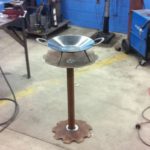5G is here – It will change the world around us
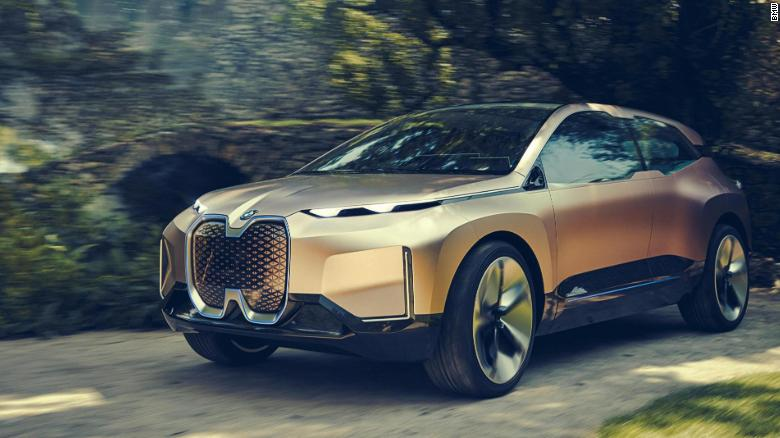
5G can be 100 times faster than the current 4G (although 30 times faster is more likely), and you can expect some real changes.
What does 5G mean? “Fifth Generation.” It’s the fifth generation of mobile internet technology which all our phones use, and for most of us this just means how fast the internet on our phones is. Right now (since 2010) our phones use 4G (or older).
5G was the center of attention at the Mobile World Congress this year. That’s because it’s bound to have a massive impact on the power of technology around us.
A big area of discussion is self-driving cars, which we’ve all seen a lot of news about, but haven’t seen a lot of actual vehicles driving themselves on the streets. But 5G is so much faster, it could allow cars to talk to each other in realtime, so they can know when other cars are switching lanes, going off the road, passing another car, going too fast, braking, etc., and can adjust their own driving.
The cars will require a bunch of cameras and sensors on them to receive this data, as well as a cloud internet service to manage the masses of data.
The BMW iNEXT, expected to hit the market in 2021, is an SUV already being built to use 5G technology in this way.
Another use for 5G already being talked about is for managing farming. Sensors are already being used on beehives, for example, to measure temperature, humidity, movement and location, so farmers can tend to their farms’ health.
Another one is “smart glasses” that will provide augmented reality. Another is virtual reality on a mobile level – not just plugged into a computer in a room. Another yet is drone swarms to carry out rescue missions or monitor traffic.
With the implementation of 5G, cellular phones will become much faster, and mobile gaming and other internet computing will be burdened with lag a lot less. On the other hand, we can expect technology to have much more power and control over our ability to maintain our privacy and independence.
The advances in technology’s power will not come immediately. They will come as a response to the new capacity of 5G, so we’re talking about upcoming products being built to take advantage of some of what 5G has to offer.
5G is going to use higher-frequency bands – 3.5GHz – 26GHz and higher, which means faster internet but less strong internet – it can be blocked more easily by real physical obstructions. This might mean a greater number of smaller, closer phone masts, but this would also be more expensive. It also might mean bad or no service in rural areas. 5G is expected to be better at handling lots of devices in a given space are trying to access the internet at the same time, though, so it will reduce internet service congestion in cities.
When? New phones sometime in 2019 in some countries, which will be able to use both 4G and 5G.
What about 6G? The industry is working on it, but it isn’t expected to be available until 2030.
Millions of workers are ‘bound’ by non-binding contracts
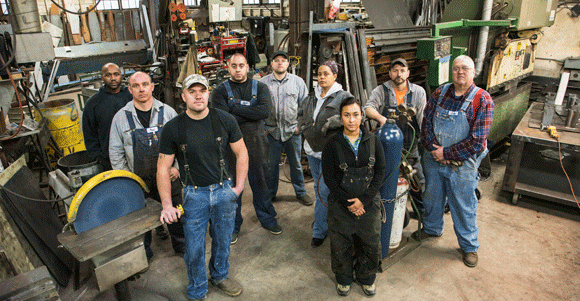
Millions of American workers believe they are bound by contracts they are not actually bound by, according to University of Maryland Smith Business School’s Evan Starr, and this means less earnings for workers. Starr spoke at length on the subject at the recent Aspen Institute summit and to us on Twitter.
While non-competes are required by employers to protect trade secrets, they are found everywhere, including regular minimum wage workers and volunteers.
What Starr has found is that workers are acting as though they are bound by employee contracts based solely on their false belief that the contracts are enforceable, but in many states the contracts are not.
“[W]orkers are chilled just by the existence of the contract regardless of whether it’s enforceable or not, and when you ask workers, ‘What do you know about the law,’ most of them don’t know what the law is, but their default is they believe that contracts they put their name on are enforceable, and they abide by them, even in states like California where they wouldn’t be enforceable if they went to court.

“When it comes to workers choosing to move between jobs what we see is the use of these provisions appears to be what matters, not necessarily their enforceability in court.”
And, according to Starr, one of the results is workers making less money throughout their careers.
“I did one study where we tracked workers over 8 years of their career. We had every single worker in 30 states over roughly a 20-year period, and what we found was that if you start your career in kind of an average enforcing state, you are going to earn 5% lower earnings relative to a non-enforcing state like California, over those 8 years, regardless of where you end up, regardless of where you go.”
Numbers are uncertain as to exactly how many Americans are affected in this way, because states vary so much in regards to non-compete enforceability.
“There’s tremendous heterogeneity across the US in what states will do. In some states you can be fired from your job, and if you get sued over the violation of a non-compete it can still be enforced even though you were fired. In other states it won’t be enforced, and everyone else is kind of in the middle.
But Starr said it was safe to say that many millions of Americans assume they are bound by non-binding contracts. In California, to use a state he studied recently, there are approximately 20 million of America’s 130 million workers, so around 4 million are involved in non-binding contracts, given that the incidence of unenforceable non-competes is around 20% of workers at any given time (around 40% of workers in Starr’s nation-wide study have at some point in their lives signed a non-compete, but many are binding for only a year or so).
“And that number is most certainly an underestimate given that non-competes are used for workers in states that wouldn’t enforce them for such workers, even though they would enforce them for other workers. See the NY and IL AG actions against numerous firms,” Starr added.
Starr et al’s ‘Noncompetes in the U.S. Labor Force’
Published with permission of our friends at TheSpeakerNewsJournal.com
Cowboy wok plow disk
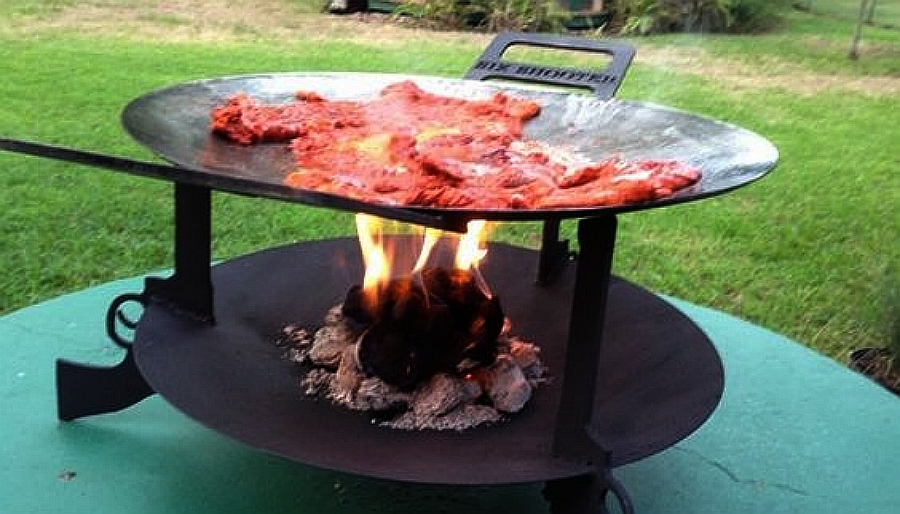
There’s really nothing that can compete with a meal cooked outdoors. I have fond memories of campouts and fishing trips where we sat around the fire and ate our freshly cooked food. Nowadays, there are several dozen different types of outdoor cooking, some of I’ve just recently heard of, like this “Cowboy Wok“, which is basically a standing open grill (also called a plow disk).
There are companies like Southwest Disk that specialize the cowboy wok, and other business that sell them as part of their inventory on Amazon. Wherever you get one, you’ll need to read up on the safety and use section of the guide prior to firing it up and trying it out.
Of course, after getting the cowboy wok, you’ll have to figure out what you want to make first — there’s a FaceBook group full of suggestions, complete with photos and videos of every kind of recipe you can imagine, from chicken pasta to antelope tacos.
If you’d rather rig a DIY version of a cowboy wok, there are plenty of YouTube tutorials to guide you, such as the one by Dave’s Homestead. Whether you buy one or make one (or alter one), you’ll be cooking up a tasty mess of home-cooked vittles in no time.
British grandfather created an ecosystem in a bottle garden he hasn’t watered in more than 46 years

One of the big complaints I hear from plant owners is that it can be a challenge to remember to water their plants, and with some plants, all it takes is one missed watering and it’s gone (especially with pickier plants like orchids). We had to quit buying plants for my mother because of this – we nicknamed her the ‘serial plant killer’.
Luckily, even if you don’t have a green thumb, you can still enjoy the benefits of having indoor plants. It just takes a little more creativity up front. David Latimer, an English native, has kept the same plant alive in an enclosed ecosystem since 1972.
The spiderwort sprout Mr. Latimer used was given enough water to foster its own ecosystem, and with sunshine pouring through its glass case, it has no trouble composting and creating carbon dioxide. It’s a fascinating study of how the Earth works, and would be an excellent project for a science classroom, a family gardening experiment, or even as a gift to your favorite botanist.
If you’d like to learn more and perhaps build your own sealed bottle garden, you can get inspired by searching out and reading about David Latimer.
Washable Kids Paint – You Can Never Go Wrong with This Stuff

Let’s not paint the house with permanents! This stuff is what kids use to spend some QT with colors. It’s a gel paint, and isn’t too runny, actually pretty thick so it globs, which is good so it isn’t running off the paint brushes all the time. It’s also non-toxic.
You can get it on Amazon for a pretty good deal: Crayola Washable Kids Paint.
Fantastic Larimar Stones
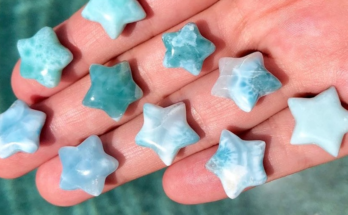
This stone is found only in one place in the whole world, believe it or not. It’s also called “Stefilia’s Stone” and it’s a rare blue variety of the silicate mineral pectolite. It’s a relatively new stone, being mined and distributed only since the 1970’s!
It comes from the Caribbean islands, the Dominican Republic to be specific. Although there was an attempt to get permission to mine it about 50 years earlier, that petition was rejected, and the stone really started out on the market when an American Peace Corps Volunteer on the island and a local man re-discovered it and after starting to show it around the world, it got a lot of interest because of the striking blue color.
The two men found the stone on the beach originally, at the foot of a mountain range, and when they talked to locals about it, they found that the locals thought the stone came from the sea and was called “Blue Stone.” Because of the blue color, a lot like the color of the Caribbean waters, one of the men retained the word “mar” (meaning “sea” in Spanish) and combined it with his daughter’s name, Larissa, to make the new name for the stone. Over time they discovered that the stones found on the beach were washed out to the sea by the river coming from the mountains. Soon, they started some mines and today in the mountain there are around 1000 such vertical perforations.
